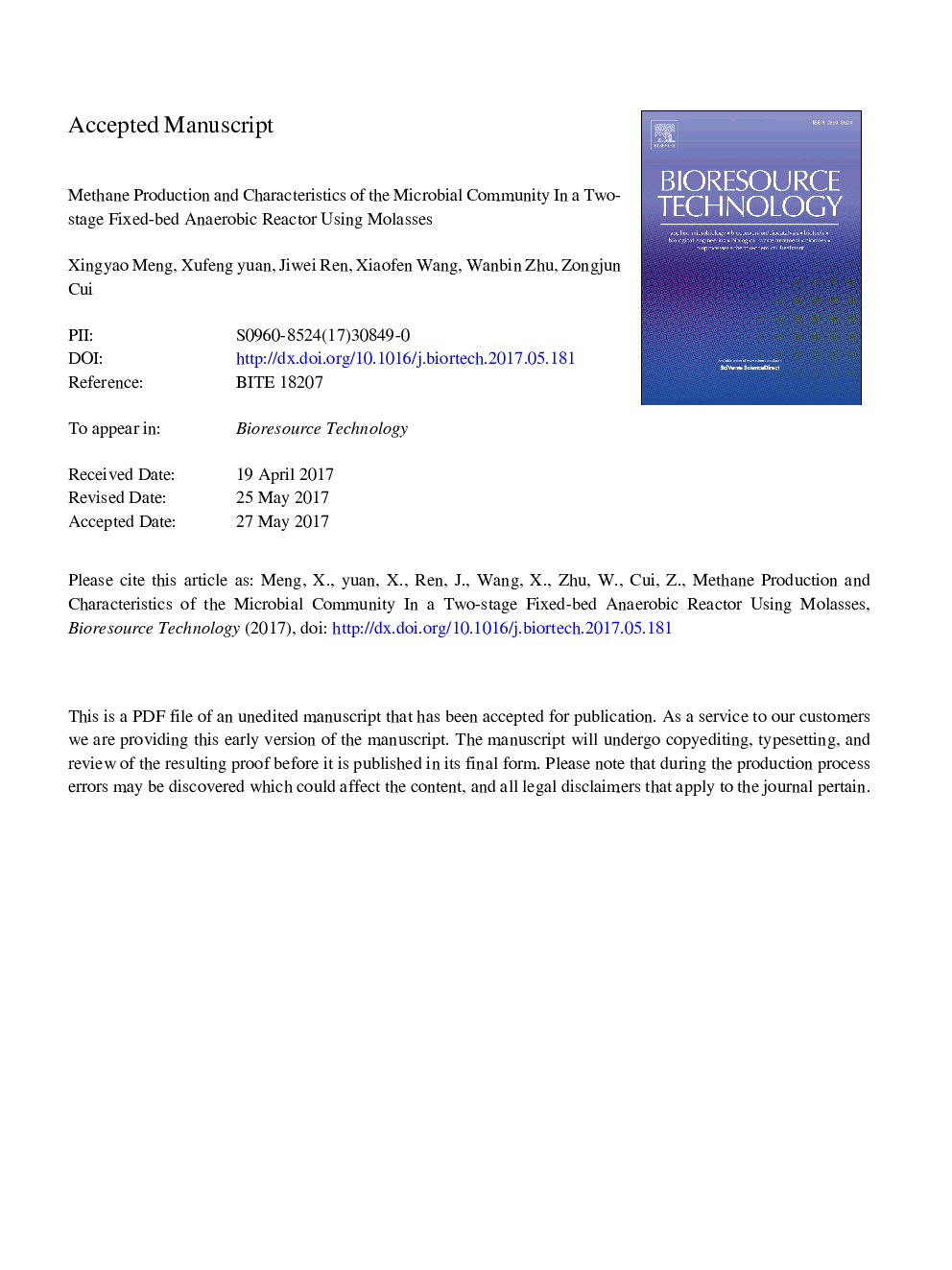| Article ID | Journal | Published Year | Pages | File Type |
|---|---|---|---|---|
| 4997070 | Bioresource Technology | 2017 | 41 Pages |
Abstract
Molasses is a typical feedstock for fermentation, but the effluent is hard to treat. In this study, molasses containing a high concentration of organic matter was treated by a two-stage Fix-bed reactor system with an increased organic loading rate (OLR). The results indicated at high molasses loading rate, the two-stage system was more efficient (i.e. organic matter removal, the COD of effluent and biogas production) than the single-stage system. The relative abundance of Anaerolineaceae and W5_norank was higher in the first stage (R1), where these organisms digest carbohydrates, while the second stage (R2) had higher relative abundance of Synergistaceae and SB-1_norank, which digest VFAs and decomposition-resistant compounds to produce compounds used by hydrogen methanogens. The qPCR analysis demonstrated that the Methanosaetaceae dominated the archaeal community in the first stage (R1), while Methanomicrobiales and Methanobacteriales were predominant in the second stage (R2), where they were involved in hydrogen production.
Related Topics
Physical Sciences and Engineering
Chemical Engineering
Process Chemistry and Technology
Authors
Xingyao Meng, Xufeng Yuan, Jiwei Ren, Xiaofen Wang, Wanbin Zhu, Zongjun Cui,
